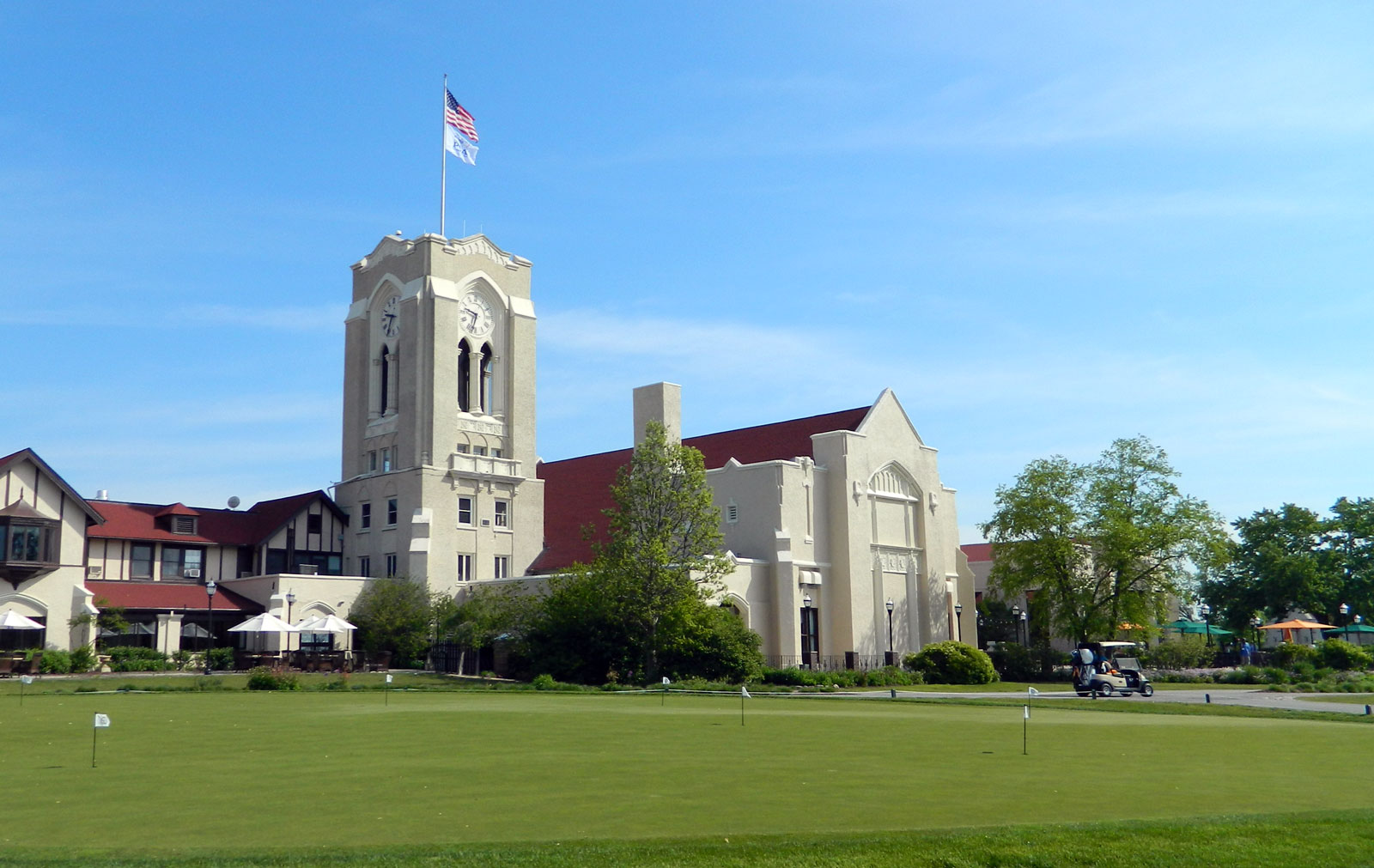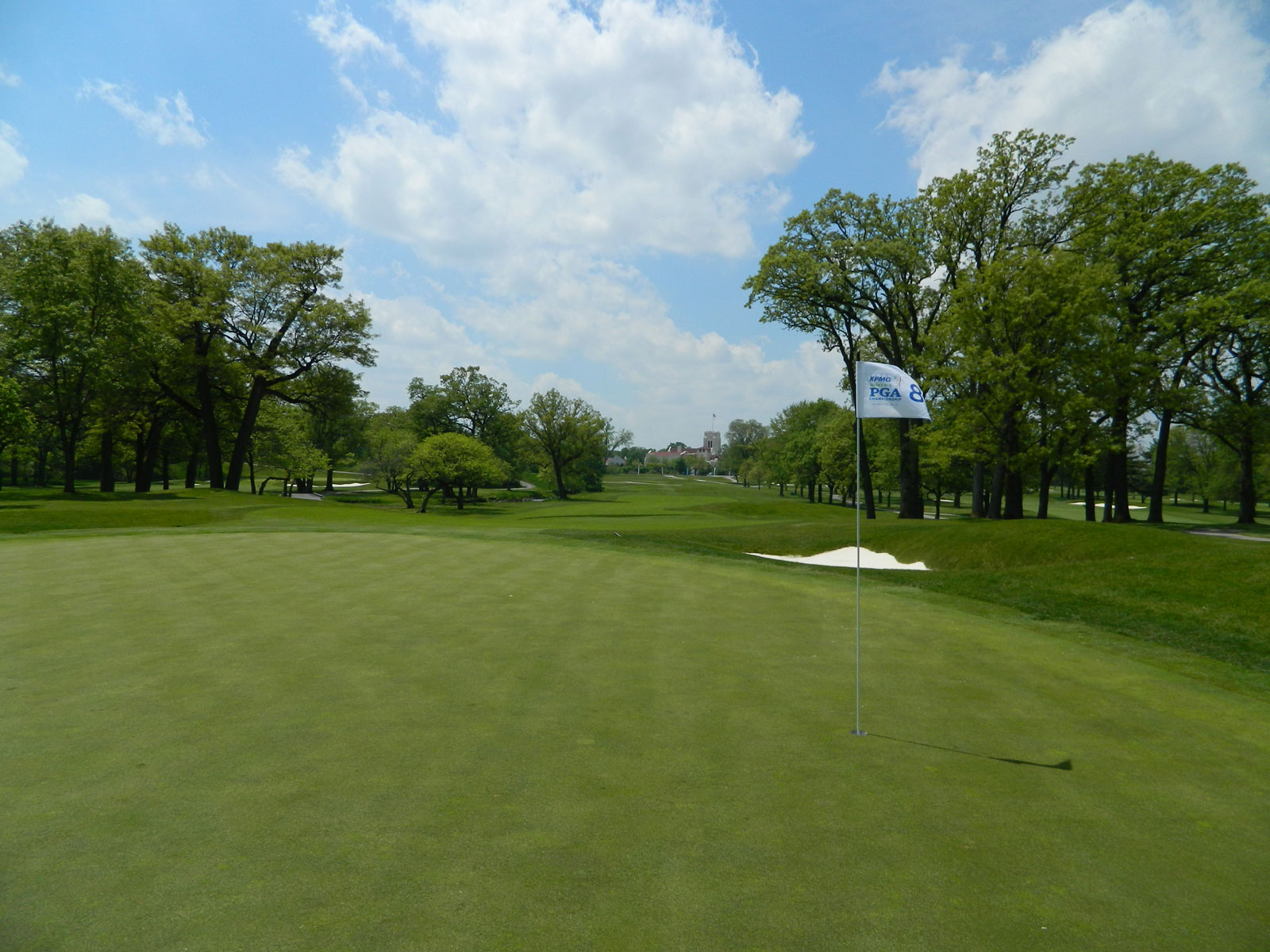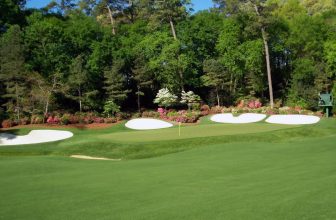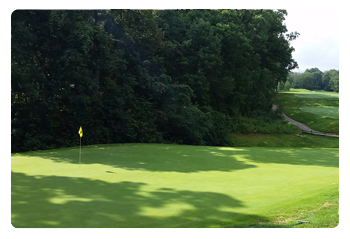
Featuring one of the largest clubhouses in the world, Olympia Fields Country Club is private, 36-hole facility that has hosted some of the greatest golfers in the world. Both courses are ranked among the top layouts in the country and the club itself is on the National Register of Historic Places.
The club formed in 1915 and the name Olympia Fields was chosen because of the association with the ancient games of Greece and the enormous plot of land the club was originally built upon – nearly 1.5 miles by 1.0-mile wide.
With such a huge parcel of land that originally cost $215,000, club founders decided to build four courses. Olympia Fields would become the first 72-hole private golf course in the country.
Who Designed Olympia Fields Country Club?
Olympia Fields Country Club Course No. 1 opened in June 1916 and was designed by Tom Bendelow. Willie Watson designed the second course, which opened in 1918. The third course opened two years later and was a collaboration between Bendelow and Watson.
Scottish golf course architect Willie Park Jr designed Course No. 4, which opened in May 1923. Course No. 4 is now known as the North Course and has hosted the BMW Championship, formerly known as the Western Open.
500 charter members joined Olympia Fields in 1915. The club grew to more than 1,400 members by 1930.
The 750-acre complex originally consisted of four 18-hole golf courses as well as 50 summer cottages, an ice-making plant, hospital, school and fire station.
The centerpiece of Olympia Fields has always been its massive clubhouse, which cost $1 million to build in 1925. The building stretched the length of a football field and the main dining room was large enough to seat 1,400.
At its peak, the locker room could accommodate 1,200 people, while also offering 70 private sleeping rooms. Legendary golf writer Herbert Warren Wind was quoted at the time saying, “Bigger and better went up all over the country. But Olympia Fields was the daddy of them all.”
Olympia Fields in Nature
In addition to being a beautiful plot of land for a golf course, or four, Olympia Fields offered a veritable nature preserve of trees, birds and other wildlife. 70 different species of trees were found on the property in the early 1920s – more than 10,000 trees in total were on the grounds.

Olympia Fields Country Club
The acreage was home to some relatively uncommon bird species including the ruby-crowned kinglets, solitary sandpipers, yellow-billed cuckoos and red-headed woodpeckers. All told there were more than 60 different bird species accounted for in the early days of the club. Other wildlife on the property at the time include deer, wild turkey, pheasants, geese, turtles and ducks.
The Founder
Though its first president was legendary coach Amos Alonzo Stagg, the club’s recognized founder is Charles Beach. Stagg coached the University of Chicago football teams to two national championships. He also coached the school’s basketball, baseball and track teams at different times.
Charles Beach was a prominent businessman who later became the first Olympia Fields village president. Beach identified the area for the club in 1913 and envisioned the rolling hills, creeks, trees and abundant wildlife an ideal location for his country club.
In 1924, club membership assumed a $500,000 mortgage to build the country’s largest clubhouse. Interest charges alone totaled $100 per day.
The debt coupled with the financial challenges of the 1930s forced club directors to sell courses Nos. 2 and 3 to real estate developers.
This difficult decision to save Olympia Fields proved the right one. In 1944, exactly 20 years after the clubhouse’s ground-breaking ceremony, the club retired all debt.
1928 U.S. Open
Since the U.S. Open and Western Open were both coming to town, the summer of 1928 was highly anticipated in Chicago. As a bonus, five prominent amateur events also were slated at Chicago-area clubs.
Of the five, the Walker Cup competition in late August at Chicago Golf Club was the jewel. It marked the first time this international golf contest would choose the Midwest.
One entrant into the U.S. Open and Walker Cup matches was capturing the most attention. Bobby Jones, the Tiger Woods of his era, was scheduled to compete in both events.
Jones was 26 when he visited Olympia Fields for the 1928 US Open. It had been six years since the Open had last visited the Chicagoland area as Skokie Country Club was the site of Gene Sarazen’s one stroke victory over Jones.
There, Gene Sarazen won the 1922 U.S. Open title when he defeated Jones and John Black by one stroke. Sarazen shot a final 68 for the win, taking home the $500 prize.
The 1928 U.S. Open took place June 21-24 and featured a $2,000 prize fund with $500 to the winner. Jones, Sarazen and Walter Hagen were among the favorites in the field of 144.
Another reason for the unbridled excitement was the fact that Jones hadn’t played in Chicago since the 1922 Open. In the six years since, Bobby Jones won two U.S. Opens, threee U.S. Amateur championships and two Open Championships.
The lawyer from Georgia led the 1928 U.S. Open tournament after two rounds with a score of 144. The golfers who made the cut played 36 holes on Saturday.
Jones carded 73 in round three, affording him a two-stroke lead going into the final round, where he was paired with Walter Hagen. With a crowd of over 5,000 watching, the two golf legends struggled to find their form.
Jones eventually carded a 77, leaving him tied with New York native Johnny Farrell. The two would compete Sunday in the first 36-hole playoff in U.S. Open history.
The matchup was a back-and-forth affair throughout the day, but it was Farrell who made a seven-footer on the final hole to defeat Bobby Jones by a single stroke.
Farrell would finish his career with 27 professional wins, but the victory at Olympia Fields would be his only major golfing championship. Bobby Jones bounced back quickly to win the 1929 and 1930 U.S Open championships as well as the 1930 British Open, British Amateur and U.S. Amateur titles.
2003 U.S. Open
The U.S. Open returned to Olympia Fields in 2003. Jim Furyk grabbed a share of the second round lead and never let it go, winning his first, and only major championship title.
The 2003 field was loaded with golf royalty, including Tom Watson, Vijay Singh, Phil Mickelson and Ernie Els. However, it was a single shot by Tiger Woods that was among the most memorable moments of tournament.
It was the second round in 2003 at the par-5 sixth. Woods had pushed his drive right on the par-5 sixth hole. His second shot was blocked by trees and he was 250 yards from the pin.
Woods hit an incredible slice that allowed the ball to reach the green, setting up a two-putt birdie. Ricky Barnes, his second round playing partner, said it was the greatest shot he had ever seen Woods hit.
2020 BMW Championship
The 2020 BMW Championship at Olympia Fields was contested without fans due to the pandemic. Although the in-person audience was limited, the event was still memorable due to an improbable 66-foot putt by Jon Rahm to end the sudden death playoff with Dustin Johnson.
20 minutes earlier, Johnson drained a 45-footer to force the playoff. This shootout between the #1 and #2 ranked players at the time has only heightened the anticipation for the return of the BMW Championship to Olympia Fields August 17-20, 2023.
2023 BMW Championship
The 2023 BMW Championship at Olympia Fields features the top 50 players in the FedEx Cup standings. Lucas Glover won the first leg of the FedEx Cup playoffs over two-time BMW Championship champion Patrick Cantlay.








 Find a Golf Course
Find a Golf Course Find a Driving Range
Find a Driving Range Find a Topgolf
Find a Topgolf Find a Golf Instructor
Find a Golf Instructor